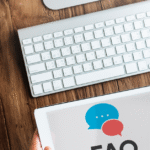Sprachtools originating from the German term for “language tools,” are resources intended to assist with learning and using languages. These tools have progressed significantly over time, evolving from basic dictionaries and grammar books to advanced digital platforms that utilize the latest technology. This article will explore the historical development, types, and benefits of Sprachtools, making it easier for you to choose the right ones for your language learning journey.
The Evolution of Sprachtools
The Early Days: Books and Dictionaries
In the beginning, language learners primarily relied on dictionaries and grammar books. These resources provided essential vocabulary and grammatical rules but lacked interactive elements. Learning a language required dedication and a lot of self-discipline.
The Advent of Audio Technology
With the invention of audio technology, language learners gained access to tapes and CDs. These audio tools allowed learners to hear the correct pronunciation and intonation, which was a significant improvement over written texts alone. Listening to native speakers helped in developing better speaking and listening skills, making language learning more effective.
The Digital Revolution
The digital age brought about a revolution in Sprachtools. Online platforms, apps, and software programs transformed language learning into an interactive and engaging experience. These digital tools offer a variety of features, including real-time feedback, speech recognition, and personalized learning plans. The accessibility and convenience of digital Sprachtools have made language learning more attainable for people worldwide.
Types of Sprachtools
Traditional Resources
Books and Dictionaries: These remain valuable resources for in-depth understanding and reference. They provide comprehensive coverage of vocabulary, grammar, and syntax.
Audio Tapes and CDs: Although less popular today, they are still useful for practicing listening and pronunciation skills.
Digital Platforms
Language Learning Apps: Apps like Duolingo, Babbel, and Rosetta Stone offer interactive lessons, quizzes, and games to make learning fun and engaging. They are designed for learners of all levels and can be accessed anytime, anywhere.
Online Courses and Tutorials: Websites like Coursera and Udemy provide structured language courses taught by experienced instructors. These courses often include video lectures, interactive exercises, and community support.
Speech Recognition Software: Tools like Google Translate and Microsoft Translator use advanced speech recognition technology to help learners practice speaking and improve their pronunciation.
Virtual Classrooms and Tutoring: Platforms like iTalki and Verbling connect learners with native speakers and professional tutors for one-on-one lessons. This personalized approach helps in developing conversational skills and gaining cultural insights.
Augmented Reality and Virtual Reality
AR and VR Sprachtools: These cutting-edge technologies offer immersive language learning experiences. Apps like MondlyAR and VR platforms create realistic scenarios where learners can practice their language skills in a simulated environment, enhancing their learning experience.
Benefits of Using Sprachtools
Personalized Learning
Sprachtools often come with adaptive learning technologies that tailor lessons to the learner’s level and progress. This personalization ensures that learners stay motivated and challenged at the right pace.
Flexibility and Convenience
Digital Sprachtools provide the flexibility to learn anytime and anywhere. Whether you have a few minutes on a commute or an hour at home, you can fit language learning into your schedule.
Interactive and Engaging
Modern Sprachtools are designed to be interactive and engaging. Features like gamification, real-time feedback, and multimedia content keep learners interested and motivated.
Access to Native Speakers
Many Sprachtools offer opportunities to interact with native speakers. This exposure helps learners develop authentic language skills and cultural understanding.
Cost-Effective
Compared to traditional language classes, many Sprachtools are cost-effective or even free. This accessibility makes language learning possible for a broader audience.
Choosing the Right Sprachtools
Identify Your Goals
Before selecting a Sprachtool, identify your language learning goals. Are you learning for travel, work, or personal interest? Knowing your objectives will help you choose the most suitable resources.
Assess Your Learning Style
Consider your preferred learning style. Do you enjoy visual aids, audio lessons, or interactive exercises? Choose Sprachtools that match your preferences to enhance your learning experience.
Research and Reviews
Read reviews and do some research to find the best Sprachtools available. Look for tools that have positive feedback from other learners and language experts.
Try Before You Buy
Many Sprachtools offer free trials or basic versions. Take advantage of these offers to test the tools and see if they meet your needs before committing to a purchase.
Future of Sprachtools
Artificial Intelligence and Machine Learning
AI and machine learning are set to revolutionize Sprachtools even further. These technologies can provide highly personalized learning experiences, real-time error correction, and predictive learning paths based on individual progress.
Enhanced Interactivity
Future Sprachtools will likely offer even more interactive features, such as advanced speech recognition, real-time translation, and immersive virtual reality experiences. These innovations will make language learning more engaging and effective.
Global Connectivity
As the world becomes more connected, Sprachtools will continue to break down language barriers, enabling seamless communication and cultural exchange. Global collaboration on language learning platforms will enrich the learning experience for users everywhere.
Conclusion
Sprachtools have come a long way from simple dictionaries and grammar books to advanced digital platforms that make language learning interactive, engaging, and accessible. Whether you’re a beginner or an advanced learner, there’s a Sprachtool out there to meet your needs. By understanding the different types of Sprachtools available and their benefits, you can make an informed decision and embark on a successful language learning journey. So, dive into the world of Sprachtools and discover the joy of mastering a new language!







